Allion Labs
In recent years, SSDs have gradually become mainstream, and typical users no longer prefer traditional mechanical drives when choosing internal storage devices. So, are HDDs becoming obsolete? Not exactly. HDDs still own a decent market share, optimal for servers, cold data storage, and other applications requiring large amounts of storage space.
Before we start, let’s briefly describe the architecture of mechanical hard drives. The main components of an HDD are the disk platter, read/write head, head actuator, motor, disk platter, IC logic board, and SATA/SAS interface connector. The head can move horizontally along the radius of the disk. As the disk spins at thousands of revolutions per minute, the head on the disk can be positioned at specified locations where data is written or read.
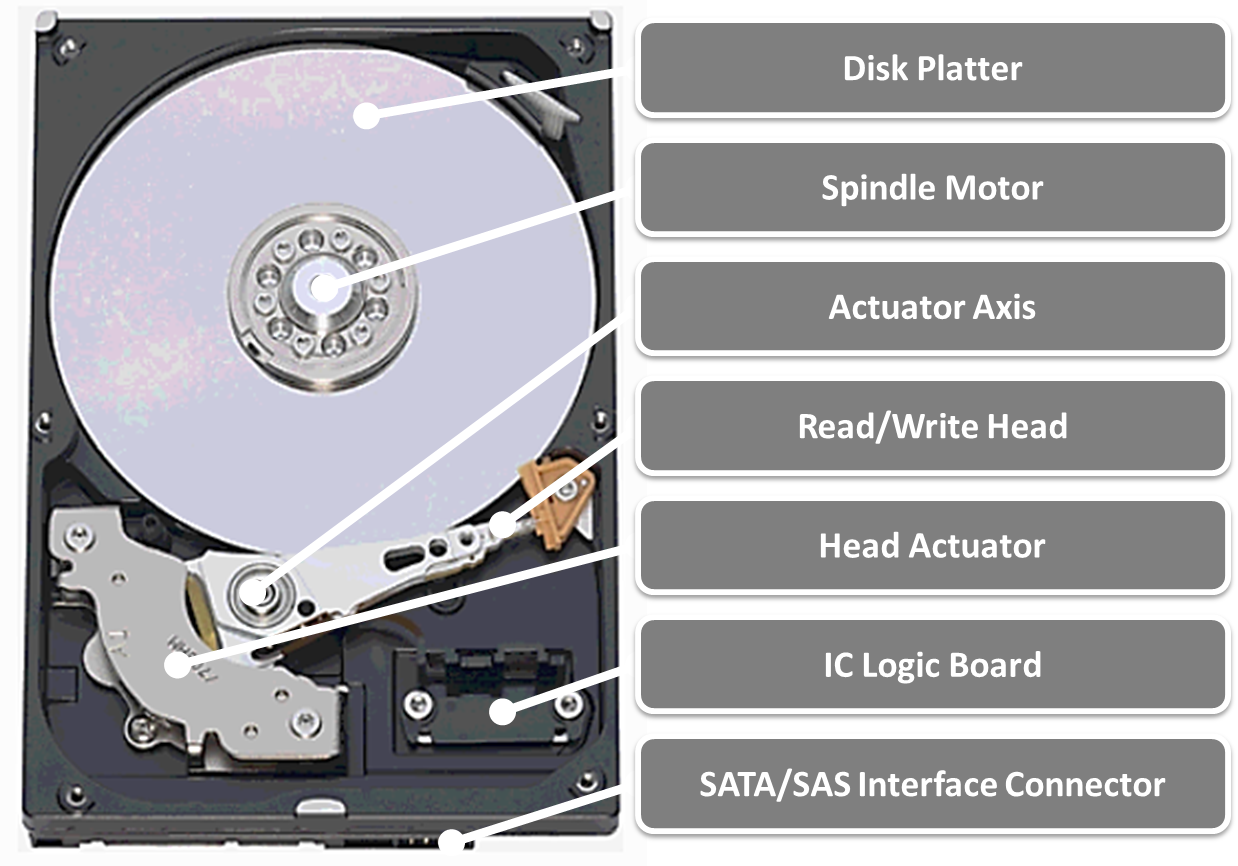
To read and write data, HDDs mainly rely on rotating platters and the head, which are vulnerable to accidental interference like external vibration, movement, or falling during operation. In more serious cases, the heads and platters can be damaged, rendering the whole hard drive unusable. Although HDDs are unlikely to be moved or dropped in a server room, the high-efficiency cooling fans for heat dissipation used in server rooms cause chassis vibration and are an inevitable concern. When high-end business-grade HDDs are mostly used for servers, can HDDs maintain high reliability and transmission performance while being affected by high-frequency vibrations during operation?
As a professional testing laboratory in the server industry, Allion Labs provides HDD manufacturers thorough verification methods to solve server problems under authentic conditions. To compare the differences between hard drives of different brands, we selected three mainstream brands’ business-grade hard drives for our tests. The following image depicts the servers undergoing test preparations. All the hard drive bays in the server were to contain HDDs during testing, and customized software was used to control fan speed, setting different speeds as we ran performance tests and recorded results. In addition, the tested HDDs were placed on a stable platform to exclude vibrations from other devices, while the test results were recorded as the benchmark value for other tests. The performance was conducted by performing a writing test with a 4K/256K block size.
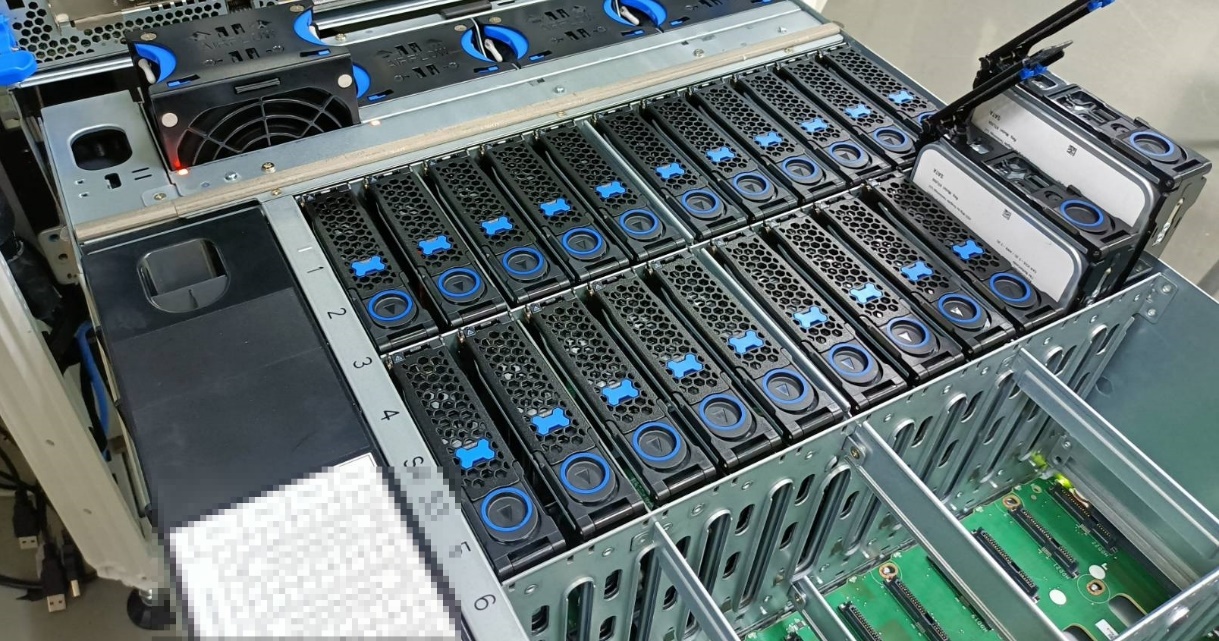
The fan speed started at 50% of the maximum speed and slowly increased by 10% until reaching full speed. Performances between different speed ranges were compared to see if the differences were too great from the benchmark. We compared the performances of the different HDDs in 256KB sequential write with the original data. As shown in the graph below, the three HDDs do not vary much with their 256KB sequential writing performances, differing between 0–1% at different fan speeds. It was proven that the performances are less affected by high-frequency vibration when writing the larger file.
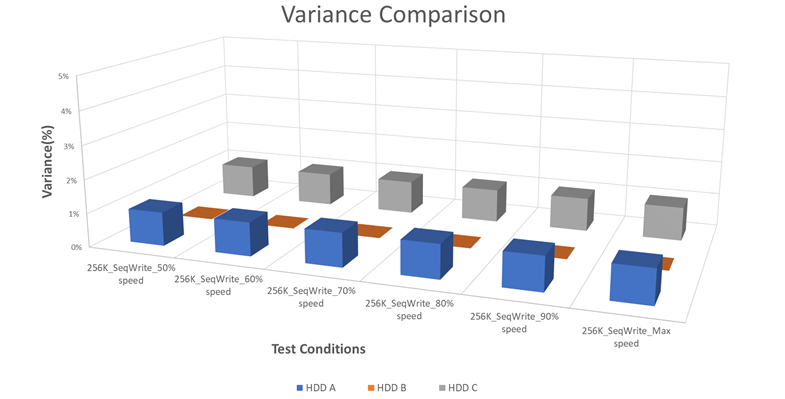
Next, the results of 64KB random writes are shown in the graph below; HDD B and HDD C performed slightly better at 70% and 90% of maximum fan speed respectively, but the difference was only around 2%, which is within an acceptable range.
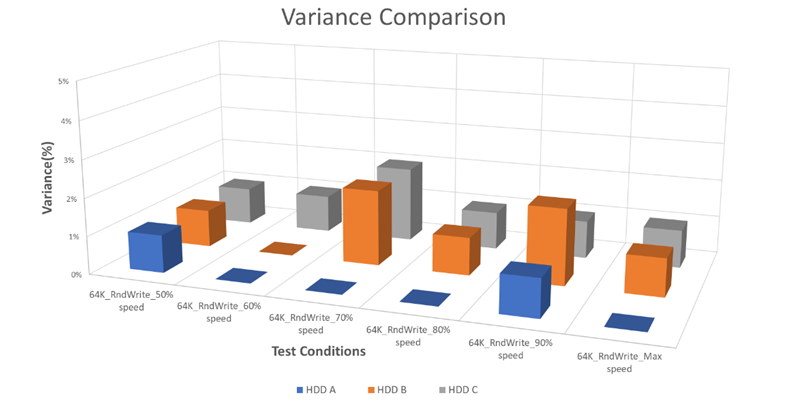
Finally, let’s check the small file 4KB random writes. The graph below shows that HDD B has a 4% difference in performance at 70–90% maximum fan speeds, which is significant when compared to the other two drives. Although differences below 5% are still within the acceptable range, such impacts on the performance of the hard drive cannot be ignored as it may increase when the equipment ages under long-term usage.
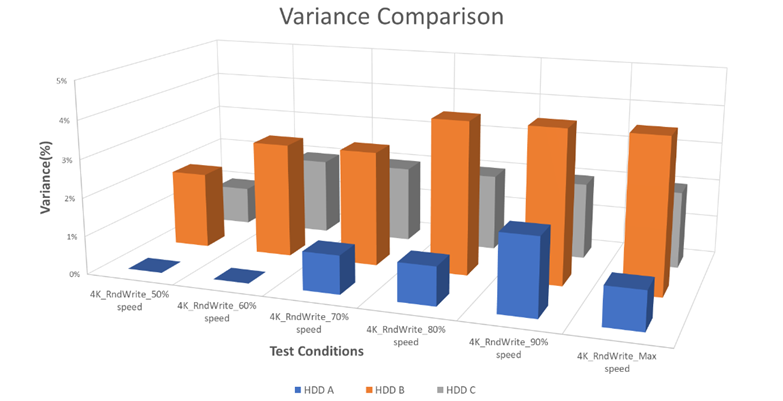
Knowing the test results of the three HDDs, performance differences are all within 5%. Except for HDD B becoming slightly unstable when writing small files, all three hard drives managed to maintain a certain level of performance stability despite the high-frequency vibration interference in the server. This proves that with the fully matured HDD technology, resistances against high-frequency vibration are still effective. Additionally, we would like to share a case that we encountered during the tests. We had an HDD with a dual-head design that provides higher performance than traditional hard drive head designs. Applying the same test method, we can see that the performance differences when comparing 4KB and 64KB random writes at full fan speed reached more than 5%. Under industry standards, a performance difference surpassing 5% will surely impact the overall system performance. Performance variation issues like this must not be taken lightly.
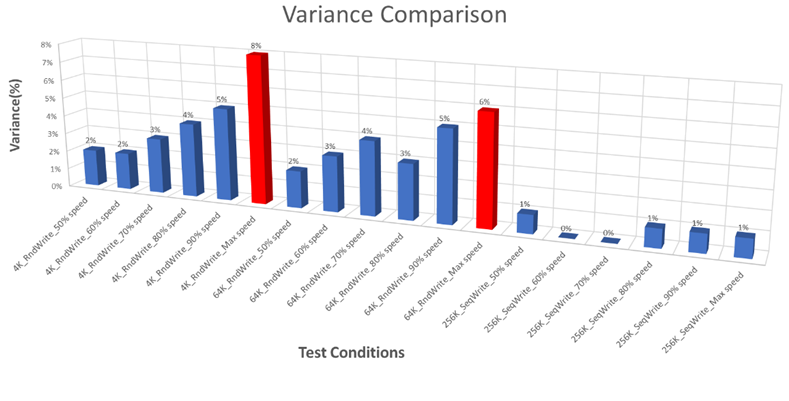
In addition to the demonstrated server-related reliability tests, Allion Labs is ready for all corresponding validation services for server-related parts and components. For requirements of server components quality, Allion Labs provide customized professional validation service, supporting customers to examine product quality and receive professional consulting for different problems. Please visit Allion Labs’ official website for more details.

































